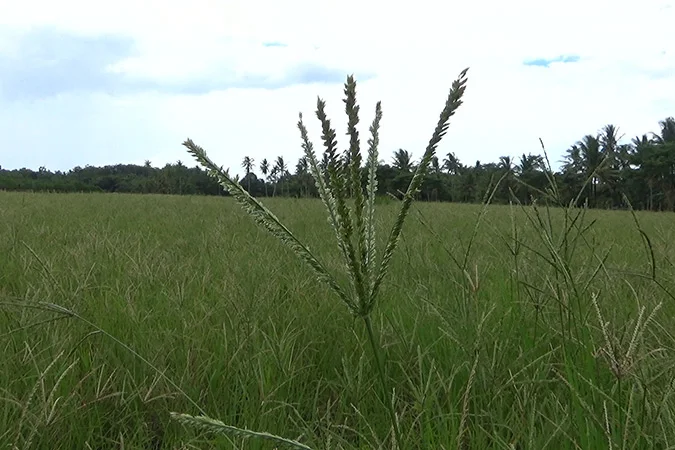Rumput belulang or goose grass (Eleusine indica) is a species of plant in Poaceae, terrestrial, herbaceous, tufted, erect, has roots in nodes, grows in warm and wet areas, open in rice fields, gardens, roadsides and trails.
E. indica has a horizontal to vertical stem base, flat to cylindrical, sturdy, branching to form a trident, green to brown. Fibrous and strong roots. The leaves are ribbon-shaped, green, pointed at the tip and a vein in the middle.
The inflorescence at the end of the stalk is long, erect, cylindrical, green and firm. Bisexual flowers, arranged together at the terminal, green with invisible petals. Goose grass reproduces naturally using seeds.
Kingdom: Plantae
Phylum: Tracheophyta
Subphylum: Angiospermae
Class: Liliopsida
Order: Poales
Family: Poaceae
Subfamily: Chloridoideae
Tribe: Cynodonteae
Subtribe: Eleusininae
Genus: Eleusine
Eleusine: indica
Varieties: Eleusine indica var. indica
E. indica has a horizontal to vertical stem base, flat to cylindrical, sturdy, branching to form a trident, green to brown. Fibrous and strong roots. The leaves are ribbon-shaped, green, pointed at the tip and a vein in the middle.
The inflorescence at the end of the stalk is long, erect, cylindrical, green and firm. Bisexual flowers, arranged together at the terminal, green with invisible petals. Goose grass reproduces naturally using seeds.
Kingdom: Plantae
Phylum: Tracheophyta
Subphylum: Angiospermae
Class: Liliopsida
Order: Poales
Family: Poaceae
Subfamily: Chloridoideae
Tribe: Cynodonteae
Subtribe: Eleusininae
Genus: Eleusine
Eleusine: indica
Varieties: Eleusine indica var. indica
